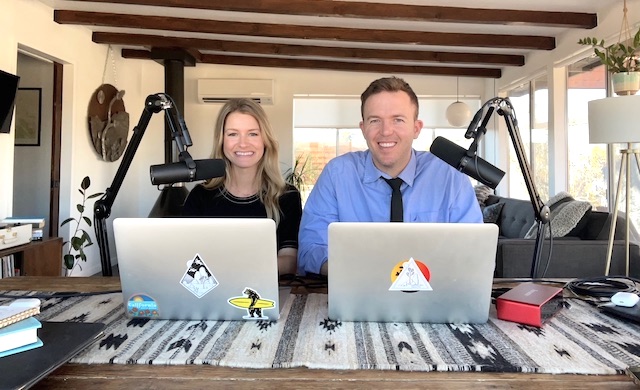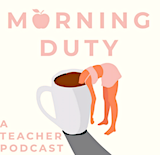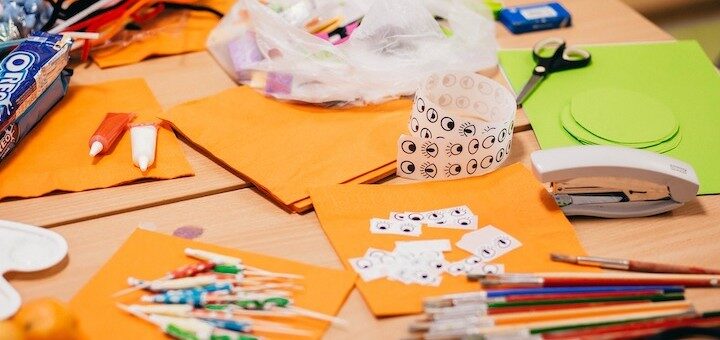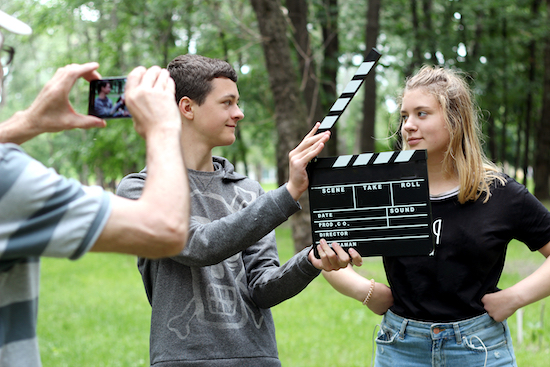Boost Student Creativity with Project Learning
 Maggie and Piers Blyth are veteran teachers and and co-hosts
Maggie and Piers Blyth are veteran teachers and and co-hosts
of The Morning Duty Podcast, a daily show for educators.
We’re willing to bet that we can all recall a project from our own school days. Baking soda volcanoes, anyone? Perhaps a diorama or book report?
Whether we loved them or loathed them, we tend to remember projects because we are direct participants in them.
And that is why projects matter so much. Our students get to play a direct role in their own learning. Projects can be tricky to implement, and some may think they’re less important than the direct instruction a teacher can provide, but projects offer myriad benefits to our students.
Why Projects Matter
Teachers have quite the juggling act – from teaching essential content to providing real-world skills, we do our best to do it all. Sometimes, given all of our requirements, important aspects of learning can get pushed aside. Projects can help revive those missed opportunities.
Creativity is a huge one. Projects support students’ creativity by giving them choice over their learning. Students have the freedom to put their individuality into their end task. From dioramas to slideshows to trifolds, kids love being able to personalize a project, and it’s fun to see what they come up with.
It can be so insightful to give kids choice in their final project output. We all do the same research task, but they can choose a poster board, slideshow, or documentary in which to present their work. As a teacher, you can get a better picture of who your students are based on what they choose.
Projects Build Life Skills
Projects also mimic several real life processes. It’s rare in life that we have a teacher walking us through each step of a situation we find ourselves in, though that would be nice! Even the best students can sometimes struggle with grit and problem-solving.
A huge benefit of including more projects in your room is that it allows students a safe place to struggle through difficult things. They cannot simply memorize the facts or practice the steps; they need to use non-linear thinking and problem solving.
How wonderful to practice these skills with a teacher by your side! It is so gratifying to guide students through these moments in a way that they can replicate again on their own. Projects are so much more than the content topic; they provide real world skills.
Leaning into the skill idea, projects are also a natural way to practice and assess academic skills. If, for example, you are teaching your students how to write a persuasive argument, that’s difficult to fully assess in a multiple choice question. Embedding that skill into a project is a more natural way to let your students practice and be measured.
While there is some controversy around learning styles and their validity, most educators can agree that changing up a lesson style and including many types of modalities is a good thing. Another benefit of projects is that students get to self select their learning. Kids who love to read and research and go down rabbit holes get the chance to do so. Students who enjoy tutorials and tinkering and getting creative can use that to their advantage.
This enjoyment is perhaps the greatest reason of all to include more projects in your room. There’s real joy in learning for the sake of learning. To have fun learning new things is something we need more of. When kids get excited about school, we all win, and projects can help with that.
Embedding more projects into our curriculum doesn’t require a total overhaul. A few strategically placed and structured projects throughout the year can change our students’ learning for the better. And of course, your project lesson plan doesn’t need to be perfect the first time through. Anything is better than nothing! Find a few learning goals you feel drawn to and see what flows from there. Your kids will thank you for it.
How to Do Projects Well
Before the Project
As with any other unit of learning, projects need to be well thought out ahead of time. Choose your goal(s) for the project and backwards plan from there. What skills need to be taught and/or spiraled? What will they produce at the end? Which standards are we covering?
Sorting the project into knowledge and skills helps create a clear picture of the creative or problem-solving tasks that students will be engaged in. Whether it is for science, math, or ceramics, a good project has a clear goal.
Once goals have been identified and the project is taking shape, it’s also helpful to craft the purpose, directions, and rubric in student-friendly language. This is for them, after all! Simplifying the project into their developmental level helps us identify any gaps as well. Share this with students as soon as possible and empower them to use it to their advantage.
On the project introduction day, spend time reading through the document and highlighting due dates, key directions, and goals. Show them how to use a rubric as a guide. This sets our students up to better manage their time and expectations.
If kids are crystal clear on their expectations and tools, they can spend more of their mental energy on the skills we’ve identified rather than trying to figure out what to do.
During the Project
Lessons look different during a project, namely that we are not leading the class each step of the way. Instead, most days involve heavy periods of work time. While this might look like free, open-ended teacher time, a lot needs to happen to help students have a successful experience.
One way we support students during projects is with their time management. Going back to the question of why projects matter, time management is a crucial skill and gets to be flexed during project work time. One key way to help grow this skill is to chunk the project into key check points with due dates.
If a full research paper is due in two weeks, consider having an outline be due in three days and a draft after that. Kids’ brains are still growing, and we can safely presume that they might procrastinate without mini due dates along that way.
Another key piece of having a successful project is giving high quality feedback. This doesn’t have to be pages of handwritten notes, but it should be specific and clear. If students submit an outline a few days into the project, it is worthwhile to give them feedback on their organization and evidence, for example.
Choose one or two high leverage pieces of their project to give feedback on in a timely manner so that they can internalize it and make corrections. It’s a detriment to their growth if our only piece of feedback comes after the due date. Seeing their gaps and being able to adjust them is key to their improvement.
Projects can be wonderful instruments for differentiation, and supporting our students with learning plans is key for project work time. Be sure to refamiliarize yourself with students’ individual learning plans and adjust the format or timing as necessary.
Working with certain students, either one-on-one or in small groups, can be easier and more beneficial during projects as well. When there is open work time, that’s the perfect opportunity to work alongside kids who need extra support. They can drive the work, but you can guide them along the way, growing their own unique skill set.
After the Project
Once the due date arrives and students’ hard work is finished, it’s easy to think that the project is over. However, including a public element can add a formality to projects and can help students share their learning with others. This could look like an in-class presentation or perhaps a submission to a local paper or gallery. If it’s a video project, why not have a public showing at school or in the community.
Some type of public aspect is ideal and also mirrors real life again. It’s rare that, as adults, we create something for work or a creative space and then never share it. Encourage your students to share their learning in a meaningful way.
Once the grading is done (on the rubric they got at the beginning of the project) and kids have shared, it’s also worthwhile to allow time and space for genuine reflection. Whether via discussion or written commentary, give students a chance to process what they’ve learned.
Consider both the content and also anything they may have uncovered about themselves. Did they find a voice inside that they hadn’t noticed before? Did they realize that they procrastinate and need help managing time?
Maybe they discovered that they have a new interest or talent! We never want learning to happen in a vacuum, so providing time to share and reflect can have a significant impact on what kids take away after a project. We hope you’ll have some project learning in your future!
Piers and Maggie Blyth are veteran teachers and the founders and co-hosts of The Morning Duty Podcast, a daily show for educators with helpful tips and good news. With 13+ years of experience in education, Maggie and Piers are intent on elevating the profession, helping teachers have better days, and connecting educators around the country. Listen to stories of positivity each day on The Morning Duty Podcast and their Instagram.








































I really agree with your promotion of projects in the classroom. It really connects to students and makes learning more meaningful and lasting.